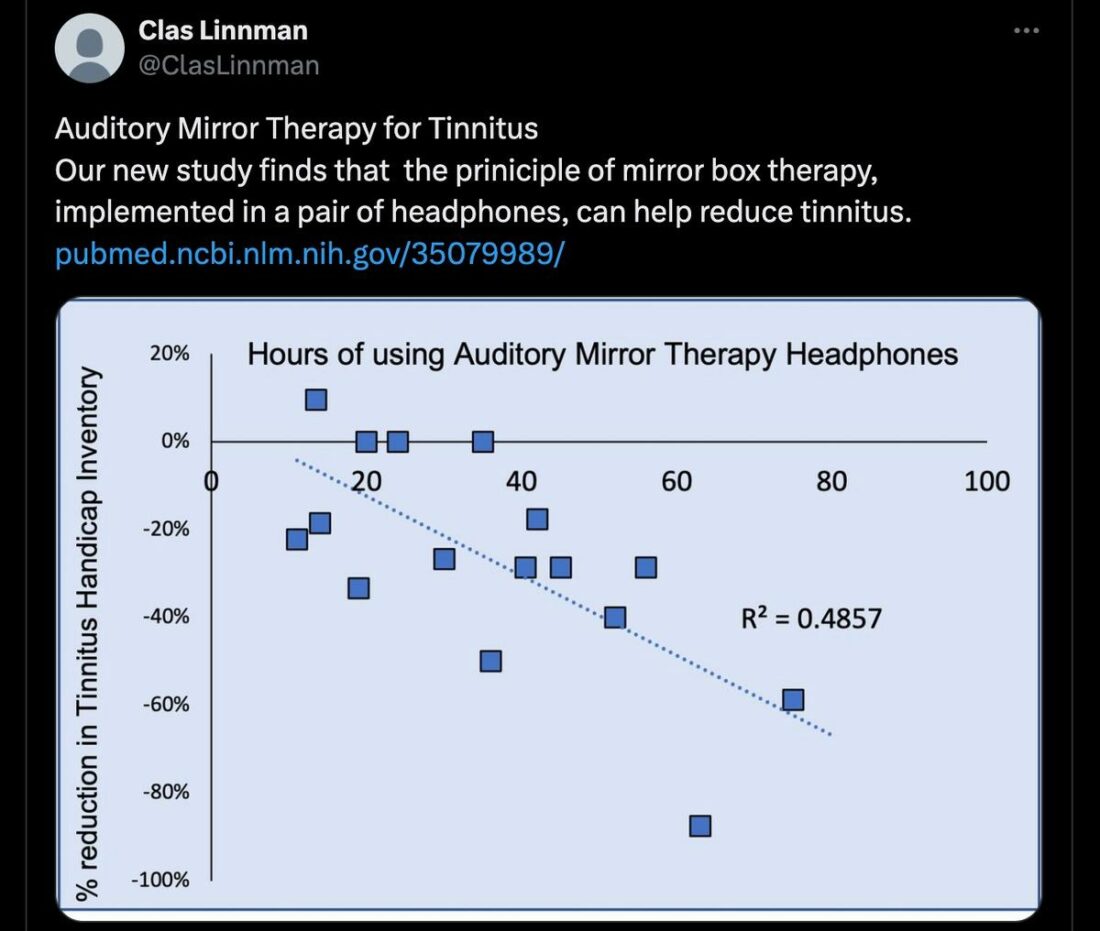Could these be the tinnitus cure we’ve all been waiting for?
Researchers have developed headphones that can treat tinnitus, a condition that causes ringing in the ears. Using Auditory Mirror Therapy (AMT), this works by flipping the sounds between ears to ‘rewire’ the brain and reduce the perception of tinnitus.
Tinnitus affects around 10-20% of the general population. However, the main treatments for tinnitus focus only on managing symptoms rather than curing the underlying issue. There’s currently no known cure or FDA-approved treatment for the condition.
That’s why, this new device offers hope to those who have long been searching for relief.
Auditory Mirror Therapy for Tinnitus

AMT is a non-invasive therapy. This was developed by Clas Linnman, PhD, an assistant professor of physical medicine and rehabilitation at Spaulding Rehabilitation Hospital.
The therapy involves wearing specialized headphones that flip sounds completely.
Basically, when someone wears the headphones, they might see a person talking on their left side. But, the sound of their voice would be heard as if they were on the right side.
This gives conflicting sounds and visual signals to the brain, so it learns that sound localization is not reliable in this situation.
The idea behind AMT is similar to mirror therapy for phantom limb pain.

“You can think of tinnitus as phantom sound the same way as phantom pain: there’s no external source of the signal. It’s generated, we think, somewhere along the pathway from your cochlea to your brain’s auditory cortex.” says Linnman.
“Our idea is to kind of mess up the brain’s integration between vision and sound, so that you see something on one side, but you hear it on the other.”
By introducing a big error into the system, the therapy helps the brain reinterpret the phantom noises from the cochlear pathway. This theoretically leads to a reduction in the perception of tinnitus.
The therapy works by messing up the brain’s multi-sensory integration, forcing it to rely more on visual cues than auditory ones. This process is thought to help rewire the auditory connections and reduce the perception of tinnitus over time.

“Humans are visually oriented — our vision is much more precise than our hearing, so if the sound is not perfectly synched with the vision, we trust our vision.” says Linnman.
“The idea is that this disruption can, like in mirror box therapy, help readjust the brain model of the world.”
Promising Results From Pilot Studies

Early pilot studies have shown promising results for AMT.
In their initial trial, 18 participants with tinnitus had big improvements in both awareness of tinnitus and tinnitus-related handicaps after using the headphones. This became evident after wearing the headphones for two hours per day for two weeks.
The study found a dose-response effect, meaning the longer someone wore the device, the more their tinnitus handicap was reduced.
Ongoing Research and Future Potential

To better test how well AMT works, a larger study with a placebo control is currently underway with 50 participants who have moderate to severe tinnitus.
The study includes tablet-based hearing tests and long-term assessments. This aims to gather more detailed data on how tinnitus symptoms may change over time with the device.
Data from the study will be looked at to decide if a third study might be needed.
With a patent pending and interest from industry, Linnman’s new therapy could soon become widely available.
This has the potential to be adapted for use in hearing aids or as a software application for wireless earbuds with microphones. And, doctors may test the technology in the field once it is decided where the technology should be used, either at home or in the clinic.
